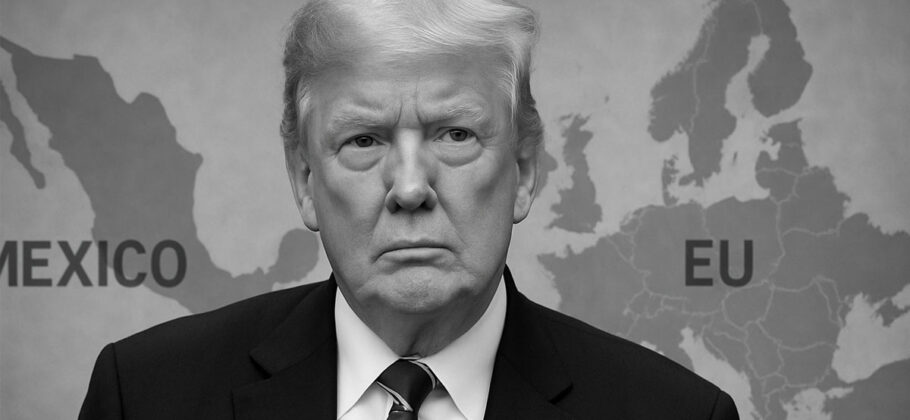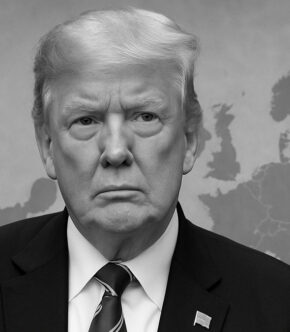On July 12, 2025, President Donald Trump announced that the United States will impose a 30 percent tariff on all imports from the European Union and Mexico, starting August 1. The move comes after months of failed negotiations and marks a significant escalation in Trump’s ongoing effort to reset global trade relations in favor of the U.S.
In separate letters posted to Truth Social, Trump justified the tariffs by pointing to two different concerns: Mexico’s role in the smuggling of fentanyl and undocumented migrants, and the European Union’s trade imbalance with the United States. Both letters accused the respective governments of failing to meet expectations on critical issues, and both suggested that negotiations could still avert the steep duties.
What Products Will Be Affected?
The tariffs will apply to all goods from both trading partners, affecting everything from auto parts and machinery to agricultural products and pharmaceuticals. Together, the EU and Mexico account for roughly one-third of all U.S. imports—$605 billion from the EU and $505 billion from Mexico last year.
Some products entering the U.S. under the U.S.-Mexico-Canada Agreement (USMCA) will be exempt, but the scope of these exemptions remains unclear. The European Union’s pharmaceutical exports, a major trade category especially from Ireland and Italy, are among the most vulnerable, with Trump also hinting at a possible 200 percent tariff on drugs.
Why the Steep Increase?
Trump said the tariffs are needed to restore fairness in trade and protect American industry. For the EU, he argued that persistent trade deficits represent a national security threat. “Our relationship has been, unfortunately, far from Reciprocal,” Trump wrote, claiming the EU has long benefited from unfair tariffs and trade barriers.
As for Mexico, Trump acknowledged the country’s cooperation on immigration and fentanyl enforcement, but said it had not done enough to prevent the U.S. from becoming a “Narco-Trafficking Playground.”
This is part of a broader strategy. In just one week, Trump announced new tariffs on more than two dozen countries, including South Korea, Japan, Brazil, and Canada. Some of these moves appear to be driven more by political motives than by trade policy. For example, Trump linked tariffs on Brazil to the prosecution of his political ally Jair Bolsonaro.
Trump’s allies say the tariffs are necessary to fix what they see as decades of economic exploitation. They argue that trade deficits have hollowed out American manufacturing and empowered foreign competitors at the expense of U.S. workers.
Commerce Secretary Howard Lutnick said earlier this week that the tariffs are part of a larger plan to secure market access and rebalance trade. “We are no longer asking. We are insisting,” Lutnick said. Supporters see this as Trump following through on his promise to prioritize American workers and industries.
Critics Warn of Retaliation and Higher Prices
European and Mexican officials responded quickly, with warnings of potential countermeasures. European Commission President Ursula von der Leyen said the EU is prepared to impose “proportionate countermeasures” to defend its interests. French President Emmanuel Macron urged the EU to be ready to “mobilise all instruments at its disposal,” while Italian officials called for negotiations to continue and avoid escalation.
Mexico’s President Claudia Sheinbaum struck a more diplomatic tone, saying she believed “better terms” could still be reached. However, the Mexican government called the tariffs “unfair treatment” and confirmed it had started talks with U.S. officials.
Economists and trade analysts worry that this move could disrupt global supply chains and lead to higher prices for American consumers. Skeptics also question whether the tariffs are based on economic concerns or being used as a tool for political leverage.
“There’s confusion about Trump’s motives,” said reporter Mike Hanna from Washington. “Are these tariffs about trade, or are they punishments dressed up as policy?”
With the August 1 deadline looming, there is still a chance that negotiations could reduce or delay the tariffs. The EU has already dropped its plan for a digital tax on U.S. tech companies, possibly as a concession to Trump. Talks are ongoing, and both sides have expressed a willingness to find common ground.
FAM Editor: Mexico will likely cave to U.S. pressure in the short term and then resist in the longer term to the extent possible – this is their usual pattern.
The EU on the other hand is much more complex. The individual countries will want to be protectionist as much as possible, which is the reason the tariffs are necessary in the first place. But they are also suffering from a downturn in industry that they cannot afford to let slide further. It may take them a while to come to an agreement and they will suffer for it.











